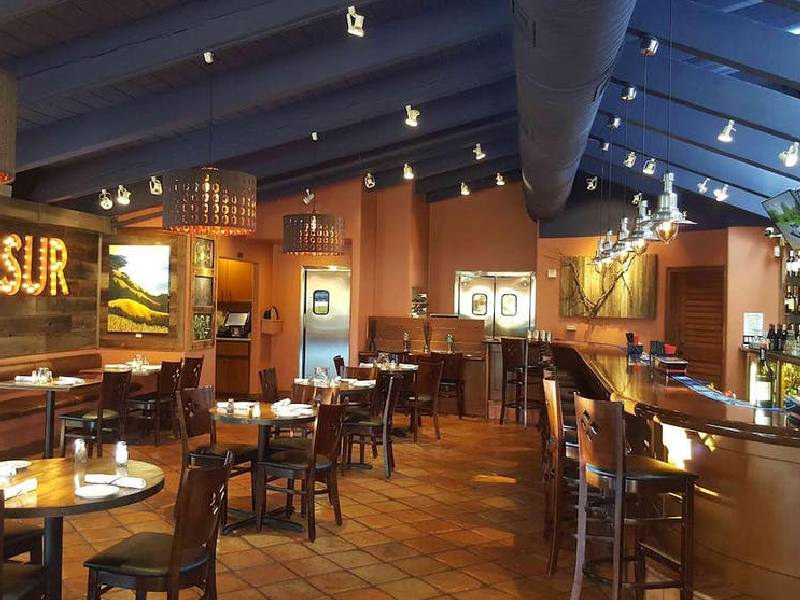
Blogs

Interior Designing for QSR vs. Casual Dining - The Difference is on The Kitchen Side
Though each fast food chain has its own specific characteristics, there are a lot of similarities when it comes to interior designing. Both QSR and casual dining fast food restaurant concepts require special touch, including design layout, furniture, lighting, entertainment and signage. These elements influence the atmosphere in the whole space as well as attract potential consumers or die-hard fans.
Definitions
These two restaurant concepts are opposites of each other. The first is Quick Service Restaurant (QSR) and the second one is Casual Dining. QSRs are fast, informal and take-out restaurants which refers to restaurants that specialise in the preparation and serving of food for immediate consumption. Casual dining refers to dining with a more relaxed and leisurely experience.
Different goals, different requirements
The two types of restaurants have different goals, different requirements and different customer needs. QSRs are usually fast casual or food court-based operations that want to serve as many customers as possible in a limited amount of space. Casual dining restaurants are more upscale and can afford to use more space per customer because there are fewer customers overall.
QSRs are focused on efficiency, speed and convenience. They need to provide quick service with little interaction between customer and server. This means that the food is prepared in advance and simply plated at the counter or table, making it easy for customers to pick up their own food and go. These restaurants also don't have waiters or waitresses who walk around with drinks for you; instead, you order your own drinks at a separate counter before sitting down to eat.
Casual dining restaurants typically require an actual wait staff who takes orders from customers who sit at tables or booths instead of standing at a counter or ordering from a drive-through window like in QSRs. They also usually have more room per customer than QSRs do because they aren't trying to fit as many people into one place as possible — which means they can afford larger tables with more room between them.
Smaller budget, More choices
Fast food restaurants often have smaller budgets than casual dining restaurants because they don't need as much space or as many employees. This means that you need a creative commercial interior design company Dubai that offers project management services to save you time and energy.
Fast food restaurants typically only have one type of meal on their menu - burgers and fries or sandwiches - but casual dining restaurants offer a wide range of options including pasta dishes, pizza and salads among others. This gives you more choices when it comes to picking out furniture pieces or other decorative items like artwork or lamps.
More people, Less space
The QSR industry is growing at a rapid rate. In fact, the number of restaurants in the United States has increased by more than 10 percent over the last decade. This growth can be attributed to the increasing popularity of QSRs and their ability to provide convenience, affordability and variety. As a result, QSRs have become a major part of our everyday lives as we grab takeout on-the-go or eat at fast food chains for dinner.
Casual dining is also experiencing growth but this trend is not as dramatic as it is for QSRs. While there are many casual dining restaurants in every city, they tend to be located in suburban areas or near office buildings where people commonly go after work for dinner or lunch with colleagues. In contrast, QSRs are usually located closer to residential areas where people often have time on their hands after work or school and prefer grabbing a quick snack or meal before heading home for dinner with family members.
Open Kitchens?
A QSR is a quick-serve restaurant. It's also called a fast food restaurant, drive-through restaurant or take-out restaurant. These restaurants typically have a small kitchen and limited dining room space. They often have limited menus, which are designed for quick service and high volume sales.
A casual dining establishment is open for more hours than a QSR, but it's not as fast-paced as an upscale restaurant. The food is generally more complicated to prepare, but it's also generally less expensive than fine dining establishments. Casual dining restaurants may have full bars with full menus of drinks and cocktails.
Turnkey fit out contractors in Dubai advise that the indoor design of an upscale casual dining restaurant should be open and inviting without being overly flashy or fussy. The interior design should reflect the style of cuisine served at the establishment, while still maintaining a clean and professional look that appeals to customers of all ages and tastes.
Customer Pickup Areas
QSR: The customer pickup area is a high-traffic area and needs to be designed with this in mind. The best way to do this is by using bright colors and patterns that are not only eye-catching, but also easy to clean. You should also consider using different materials for different areas of the store. For example, vinyl flooring would be great for the kitchen area, but ceramic tile would work well for the dining room.
Casual Dining: The customer pickup area is important in casual dining, but it does not require as much attention as QSR locations. This is because there are fewer customers coming through your restaurant, and they will typically be seated at their table before they order food. If you have a large waiting area, then you may want to consider adding some greenery or plants to give your restaurant a more homey feel.
Multi-cooking Zones
Another important thing to consider in a commercial restaurant design and build in Dubai is the layout and design. The layout of your kitchen will determine how you are able to work with it, and thus how successful you will be in running your business.
There are many different ways to organise a commercial kitchen, but the most common way is by dividing it into zones for cooking, food storage, prep work and cleaning. These zones should be designed so that there is no cross contamination between them.
QSRs require cooktops that can handle high volumes of food at once, while casual dining restaurants need separate cooking zones for each type of food being prepared (e.g., chicken, beef, fish).
Order Management and Ticketing
If you're installing your own POS system, consider one that supports multiple types of orders and tickets, such as table service and drive-thru. If you're using a vendor-provided POS system, ask them about their capabilities before signing on the dotted line.
Seating Design
It's all about timing when it comes to seating design for QSRs and casual dining concepts. In general, QSRs don't require much seating because customers tend to be in-and-out quickly after ordering their food. Casual dining restaurants often offer more seating options and take longer to serve food — especially during peak hours — which means customers may need somewhere to wait for their meal (or an order).
Casual Dining and QSR Space Design Specialists
A pleasant atmosphere is crucial for both. QSRs and Casual Dining restaurants need a space that is visually appealing and exciting, suitable for casual encounters and events. There are unique design challenges for both industries with the main focus being to create an inviting space for their target demographic to dine or have a cup of coffee. The key to designing a restaurant is to keep guests coming back, and CSI interior fit out contractors in Dubai use their design and build skills, knowledge and concepts to convey a sense of authenticity and criteria of the locations to be appealing and functional.
Do you want us to get back to you?
Feel free to call us on +971 4 262 5261 or send an email to info@csiuae.ae and our sales consultant will get back to you.
Get in Touch
